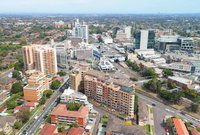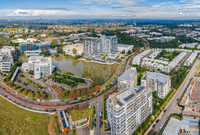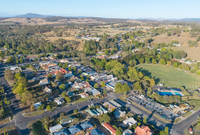Australia’s property market has managed to hold its value
despite the doom and gloom predictions of what the COVID-19 shutdown would do
to property prices.
The latest property market research report, ‘The PRD Australian Economic and Property Report 2020’ reveals on
average, median house prices grew in capital city, metropolitan and regional
markets in the 12 months to the first half of 2020.
PRD Real Estate Chief Economist, Dr Diaswati Mardiasmo ‘believes
the market has shown great resilience despite everything that was thrown at it
in the past 12 months’.
Despite
extensive drought last year combined with devastating bushfires, the Australian
property market was in recovery during the latter part of 2019 and the first
two months of 2020.
Dr. Mardiasmo
commented that, “whilst
COVID-19 hit us swiftly this year and threw Australian economy and
property markets into turmoil, things settled down within the property market
quicker than initially thought”.
“That doesn’t mean
everything has returned to normal yet, but as the PRD Australian Economic and Property Report reveals, Government
stimulus has quickly helped prop up the property market and balance out some of
the ill effects of the COVID-19 shutdown.”
The PRD report includes the latest independent
property market data wrap up that covers, up to and including June 2020. Tis
topical report not only captures the
latest impact of COVID-19, it also highlights how Australia’s
unprecedented release of multiple fiscal and monetary policy assistance has created a market
balance.
Key
PRD findings include:
- On
average, median house prices grew for capital, metropolitan, and regional
markets in the 12 months to the first half of 2020. Regional markets performed
the best; up by 3.4%. Capital city markets grew by 1.0% on average, led by
Melbourne, Sydney, and Hobart.
- Consumer
confidence has returned to pre-COVID-19 levels with confidence up by 23.9% in
June 2020 after a plummet in April. Business confidence has also dramatically
improved.
- Upgraders
and first home buyers are taking advantage of available government grants and
competitive offers from banks. Upgraders accounted for 42.0% of loans in June
2020 and first home buyers accounted for 21.0% of loans - an all-time historic
high since 2013.
- New
home sales increased by 77.6% as of June 2020, from a record low result in May.
The HomeBuilder scheme is balancing the downturn in residential construction
due to COVID-19.
- Vacancy
rates hit their peak in April 2020 of 2.6%. However, this still means that
97.4% of rental properties are occupied.
“There is no doubt we are seeing signs of gradual
improvement,” Dr Mardiasmo said.
“Uncertainty about the health situation and the future strength
of the economy is making many households and businesses cautious. However,
despite the curveballs the property market has been remarkably
resilient, and demand has been stronger than many people anticipated.
“The key going forward will be increasing levels
of employment, public and private investment and consumer confidence based on
the ongoing impact of COVID-19. This sets the scene as we walk the tightrope to
full economic recovery.”










